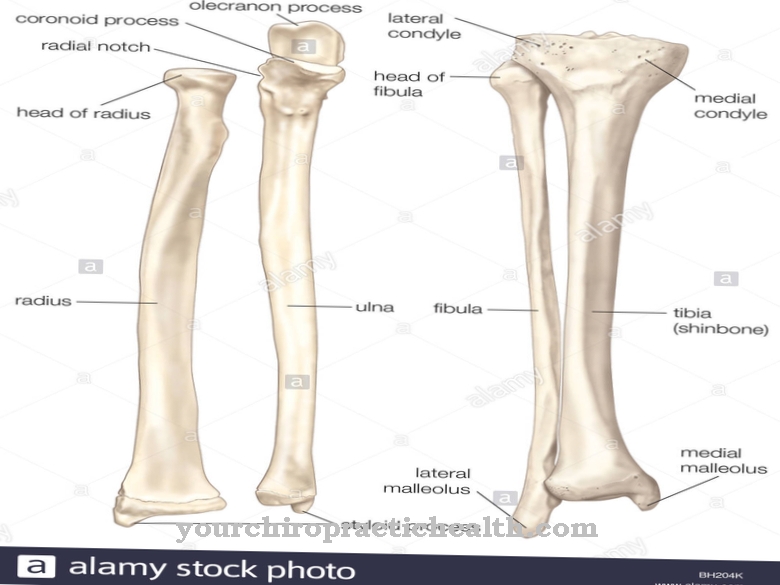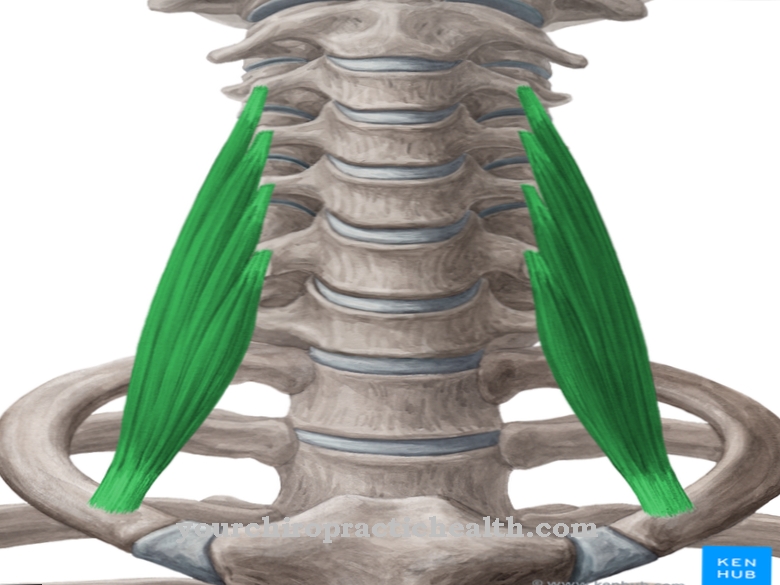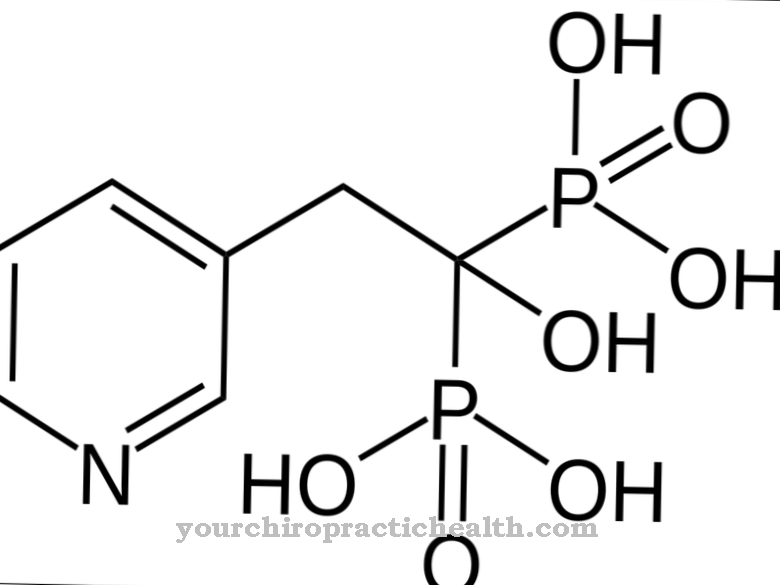At a Lumbar puncture nerve water is taken from the spinal canal. This examination provides valuable information on a possible change in the fluid composition and thus on diseases of the nervous system.
What is a lumbar puncture?

The lumbar puncture is a very important diagnostic tool for clarifying diseases and symptoms. The sample from the cerebrospinal cord fluid is taken through a small puncture in the spinal cord canal and examined for composition, cell components and color. The lumbar puncture is performed between the second to fifth lumbar vertebrae or the spinous processes located there.
The nerve fluid that is drawn is also known as liquor, which surrounds the brain and spinal cord. With a lumbar puncture, medication can be injected into the CSF or the pressure of the CSF can be measured if necessary. Approximately ten to fifteen millimeters of nerve water is taken from the spinal cord. The task of this clear liquid lies in its protective function: It primarily cushions in the event of vibrations. If tumors form in the nervous system or if inflammatory diseases develop, this change is also reflected in the composition of the nerve water. The lumbar puncture is one of the most common methods of collecting CSF.
Function, effect & goals
The lumbar puncture is performed in a lying embryo position or bent over while sitting. After disinfection and local anesthesia, a flexible puncture needle is used for collection. The nerve water pressure is determined with a riser pipe. In healthy people, the CSF contains a maximum of four cells per microliter. In the case of bacterial meningitis, the cell count is 1,000 cells per microliter in comparison.
Increased protein levels may be due to bleeding in the cavities that contain nerve water and indicate inflammation due to the increased number of viruses, bacteria or inflammatory cells. The value of lactate and glucose can indicate a disruption of the blood-liquor barrier, because normally the glucose value is only half as high as the proportion of glucose in the blood. An increased lactate level found during a lumbar puncture may indicate tuberculous or bacterial meningitis. The lumbar puncture provides important markers, especially if you suspect inflammatory and malignant diseases of the meninges or the brain itself, such as multiple sclerosis, encephalitis or meningitis.
Tumor cells, but also leukocytes and bacteria as well as glucose, lactate or free hemoglobin can be detected after bleeding. After taking the samples, they are sent to the laboratory, microbiology or pathology department for more detailed examination. In therapeutic applications, drugs such as chemotherapeutic agents are administered in exceptional cases directly through the spinal fluid. Because of the blood-brain barrier, it is often easier and more efficient to administer drugs through the spinal cord than through the blood. In addition, the lumbar puncture is a way of relieving increased CSF pressure for a short period of time in the case of a head of water or a CSF negative pressure syndrome. In anesthesia, the lumbar puncture is often also performed as a lumbar anesthesia, which aims to temporarily inhibit the function of certain nerve segments.
It is an important anesthetic procedure for operations on the lower half of the body, such as a hip joint operation or a caesarean section. A lumbar puncture is helpful in determining whether there is bleeding in the brain, Lyme disease, or a tumor in the brain or spinal cord. A lumbar puncture is an effective means of clarifying an existing inflammatory change even if there is a suspicion of cancer of the meninges, leukemia or lymphoma. Symptoms such as headache, nausea, and vomiting may indicate an increase in intracranial pressure, so a lumbar puncture is not recommended.
This intracranial pressure is triggered by brain tumors, cerebral haemorrhage or inflammation. The lumbar puncture, which takes around 20 minutes, is also performed on an outpatient basis. The aim of the lumbar function is to clarify possible diseases, especially nerve diseases. A lumbar puncture is now advisable even if Parkinson's is suspected, as well as neurosyphilis, a specific form of syphilis. The lumbar puncture is an important instrument in the field of MS diagnostics and is also used therapeutically.
You can find your medication here
➔ Medicines for painRisks, side effects & dangers
A lumbar puncture should not be performed if an increase in intracranial pressure is suspected. There is also a contraindication in the case of a blood clotting disorder due to the prescribed medication. The lumbar puncture is relatively painless, so local anesthesia is not always performed. A common side effect may be headaches, which are reduced in a lying position.
Preventive bed rest doesn't help. The headache usually subsides after a few days. There may be pain at the puncture site and referred pain. Nausea and dizziness are also known to be possible side effects. Serious complications such as nerve injuries or symptoms of paralysis, as well as infections, occur rarely as a result of a lumbar puncture. Bleeding from blood vessels that are accidentally punctured is also possible. Other side effects of a lumbar puncture can include symptoms such as neck stiffness, photophobia or ringing in the ears. Infections at the injection site can be treated with appropriate ointments and antibiotics.
A numb feeling when a nerve is struck can be an undesirable consequence of a lumbar puncture. Rather the exception are circulatory problems and breathing disorders, inflammation of the spinal cord membranes or bleeding that could occur after performing a lumbar puncture. The blood-brain barrier can be disturbed in certain diseases. Certain blood components then pass into the brain water. With the lumbar puncture, the protein and sugar content of the nerve water can then be examined and the exact number of white and red blood cells determined.















.jpg)







.jpg)




